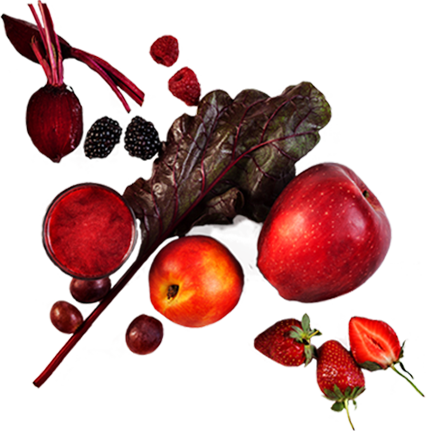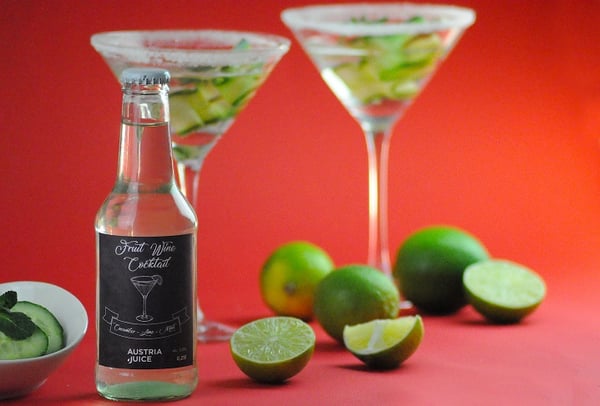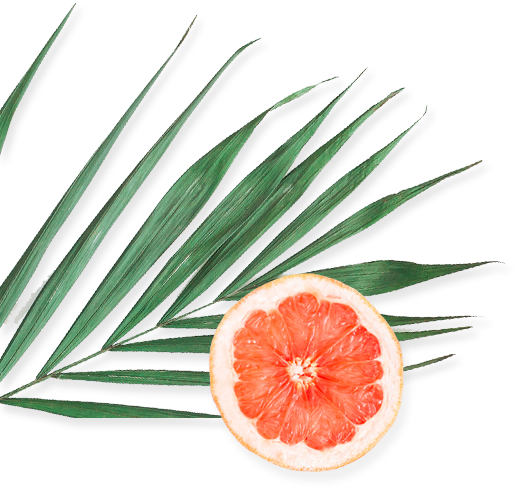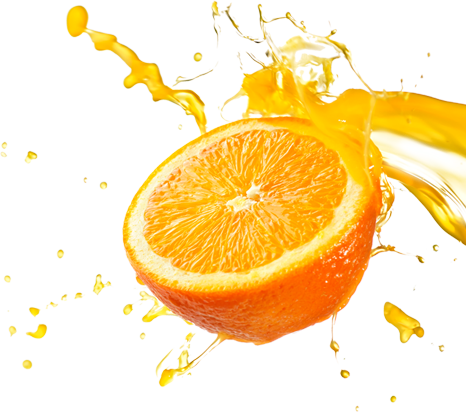
Fruit wine and fruit seccos: The light way to enjoy "wine"

Featured Posts
Categories
Interested in more? Subscribe to our blog.
Summer is approaching and the time to enjoy refreshing drinks outdoor. Fruit wines, fruit seccos and honey wines are becoming increasingly popular. For good reasons, they are now the light, fruity alternatives to grape wine. We show why it is now worthwhile to follow this trend!

Whether at the garden party, in the beach bar or in the swimming pool: In warm temperatures, cool, light drinks provide even more enjoyment of life and summer feeling. Fruit wines, ciders and seccos now stand out as playful alternatives in all possible colours between grape wine and sparkling wine on the shelves in supermarkets and are in high season in the summer. They taste fresh and, with lower alcohol levels, put much less strain on the organism at hot temperatures. Fruit wines and Seccos not only fertilize the summer of consumers, but also the profits of beverage manufacturers - because Seccos in particular scores with great growth potential.
Alcohol consumption is decreasing worldwide
The light versions of alcoholic beverages are on the rise, with the main driver the increasing health awareness of consumers. According to various surveys, people around the world tend to drink less and less alcohol: In the UK, 33 percent of those over 18 years old say they have reduced their alcohol consumption in the past year, in the United States 21 percent stopped alcohol consumption in the United States in the past twelve months.
Source: “Attitude towards low- and non-alcoholic Drink UK”, Mintel, August 2019
“Alcoholic Beverages Occasions US”, Mintel, September 2019
However, it is less a matter of foregoing the taste of cocktails, wine and so on, than of the actual need to reduce alcohol volume percent. As reported by Beverage Daily, the demand for non-alcoholic beverages with less than 0.5 percent by volume, especially in Europe, is increasing rapidly. Germany, Spain and Russia are the main markets for those beverages, but France, the UK and Italy will also have great growth potential in the future.
Source: https://www.beveragedaily.com/Article/2020/04/03/Zero-alcohol-drinks-The-European-picture
The trend towards reducing alcohol consumption will also continue in regions outside of Europe, where it is already established. The trend towards low and no alcohol was already evident in markets like the US and China before COVID-19, but has accelerated since the outbreak, particularly among younger consumers aged 22 to 34. So people are increasingly trying to reconcile the craving for alcohol with growing health awareness.
Mintel experts are recommending brands to offer lower-alcohol beverages in emerging markets to pave a longer-term path to 0% alcohol. That makes sense: in the UK alone, for example, 47 percent of 18 to 24-year-olds have reduced their alcohol consumption.
Younger consumers tend not to enjoy the taste of alcohol as much as older consumers. More than three-quarters (78%) of 22-34 year olds agree that flavour drives their choice of alcohol. Innovative wines with a lower alcohol content should open up fruitier aromas and less alcohol taste to younger alcohol consumers. And this is where fruit wines and seccos come into play: they score with precisely less alcohol and a significantly greater variety of flavours than grape wines.
Mixed colours and creative tastes are trendy
Fruit wines and seccos are made from different types of fruit - for example from strawberries, raspberries, currants, elderberries, but also from apples, pears or stone fruit such as apricots as well as exotic fruits such as mango or passion fruit and many more. According to wine law, these products are considered fruit wines, which is why they are usually not found in conventional wine shops.
The biggest difference to grape wine lies in the aroma: fruit wines smell and taste very intensely like the fruit from which they were made and they benefit from a moderate residual sugar content, which underlines the aroma. That is why so many different flavour compositions are possible with fruit wines, which meet the demands of younger consumers.
In addition to the increased demand for less alcohol and more flavour variants, flavours based on natural ingredients are particularly preferred globally, which is another argument in favour of fruit wine. Good taste is - not least because of the increasing importance of social media - increasingly associated with the colours of the drink. This allows brands to market their products made from different types of fruit in a colourful and diverse manner on Instagram & Co. to the digitally affine target group.
Source: "Flavor Focus: Alcoholic Beverages", Regina Haydon, Mintel, May 2018
Reason enough for fruit seccos, fruit wines and ciders as well as honey wine to celebrate their upswing! For a better understanding, we present the individual categories in detail here:
1. Fruit wine: fruits and berries instead of grapes
Fruit wine originated "by coincidence" - as a by-product of the production of berries or other fruits. Today fruit wines are produced by industrial producers such as AUSTRIA JUICE as an independent product line, for example from cherries, various berries and tropical or oriental fruits such as pineapple and pomegranate. The wines from apples and pears, on the other hand, are classified in their own category, internationally as cider and perry.
A wide range of RTD drinks based on fruit wine is also popular, such as fruit mulled wine, fruit wine punch and fruit wine cocktails.
Source: https://www.fruchtwein.org/fruchtwein.html

2. Fruit Seccos: Sparkling fruit pearl and fruit sparkling wine
Fruit wine can be the basis for fruit secco. Since 1971, only sparkling wines made from grapes can be called "sparkling wine". Therefore sparkling fruit wines, which are not from grapes, rather from other fruits, have to called “Secco”. Berry or fruit "sparkling wines" present themselves today as fruity alternatives to "the real" sparkling wine and prosecco. Young, fresh fruit wines are mixed with about 4 g/l carbonic acid to produce fine-sparkling fruit sparkling wines. In some cases, the natural carbonic acid collected during fermentation is added, which creates the fresh, fruity taste.
How do fruit pearl wines differ from fruit sparkling wines?
The decisive factor is the carbon dioxide content: For example, fruit sparkling wines in the bottle must have an overpressure of at least three bar at 20 °C, in contrast, for fruit sparkling wine it is only about two bar!
Source: https://www.fruchtwein.org/frucht-perl-schaum-wein.html
3. Honey wine or met: Sweet pleasure with honey and yeast
In contrast to fruit wines and seccos, honey wines are particularly in season in the winter months. "Met" is the old Germanic term for honey.
The aromatic drink is made by fermenting one part of honey and a maximum of two parts of water. Yeast drives fermentation. A small amount of fruit acid can be added for the durability of the honey wine, after which the taste is perfected by adding honey again. The addition of sugar is not permitted in the production of honey wine. Honey wine or met usually has an alcohol content of nine to 12 percent by volume.
Honey wine is particularly popular for hot winter drinks in combination with spices such as anise, ginger, nutmeg or cinnamon, and herbal essences are also in the recipe for some varieties.
Source: https://www.fruchtwein.org/honigwein.html
AUSTRIA JUICE has been producing fruit wine and fruit wine bases for a comprehensive range of alcoholic beverages at the production site in Germany since 1982. Through the careful fermentation of hand-picked ingredients and the final refinement by the experts, it is possible to create unique products of the highest quality. On the basis of the excellent fruit wines, innovative alcoholic and non-alcoholic beverage concepts of the most diverse nature are realized. These are offered as ready-to-fill products, but also as a base in the form of standardized, alcoholic and dealcoholized base wines for further beverage manufacturers or for the production of vinegar. AUSTRIA JUICE fruit wines also serve as the basis for trendy hard seltzer products.
CONCLUSION:
Consumers all over the world want to live healthier and more conscious lives – and be efficient in their professional environment. Surveys show that the global trend is going towards reduced-alcohol beverages – especially among younger consumers between the ages of 18 and 34. Light, fruity alternatives to traditional grape wines such as fruit wines, fruit seccos or ciders are therefore meeting consumer demand for less alcohol and a greater variety of tastes.
From the popular fruit wine classic to the extravagant RTD product based on fruit wine, AUSTRIA JUICE supports beverage bottlers with their wide product portfolio in the field of fruit wine, cider and beverage bases.

Matthias NiesAuthor
Director of Sales Fruitwine



